
How to Use ESP32-WROVER-IE (38pin): Examples, Pinouts, and Specs
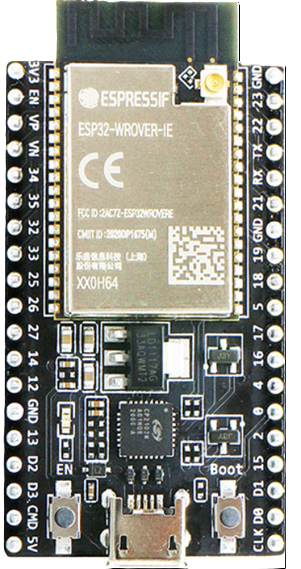
 Design with ESP32-WROVER-IE (38pin) in Cirkit Designer
Design with ESP32-WROVER-IE (38pin) in Cirkit DesignerIntroduction
The ESP32-WROVER-IE (38pin) is a powerful Wi-Fi and Bluetooth microcontroller module designed for high-performance IoT applications. It features a dual-core processor, integrated memory, and support for a wide range of peripherals, making it suitable for tasks such as wireless communication, data processing, and sensor integration. Its compact design and robust capabilities make it a popular choice for developers building smart devices, home automation systems, and industrial IoT solutions.
Explore Projects Built with ESP32-WROVER-IE (38pin)
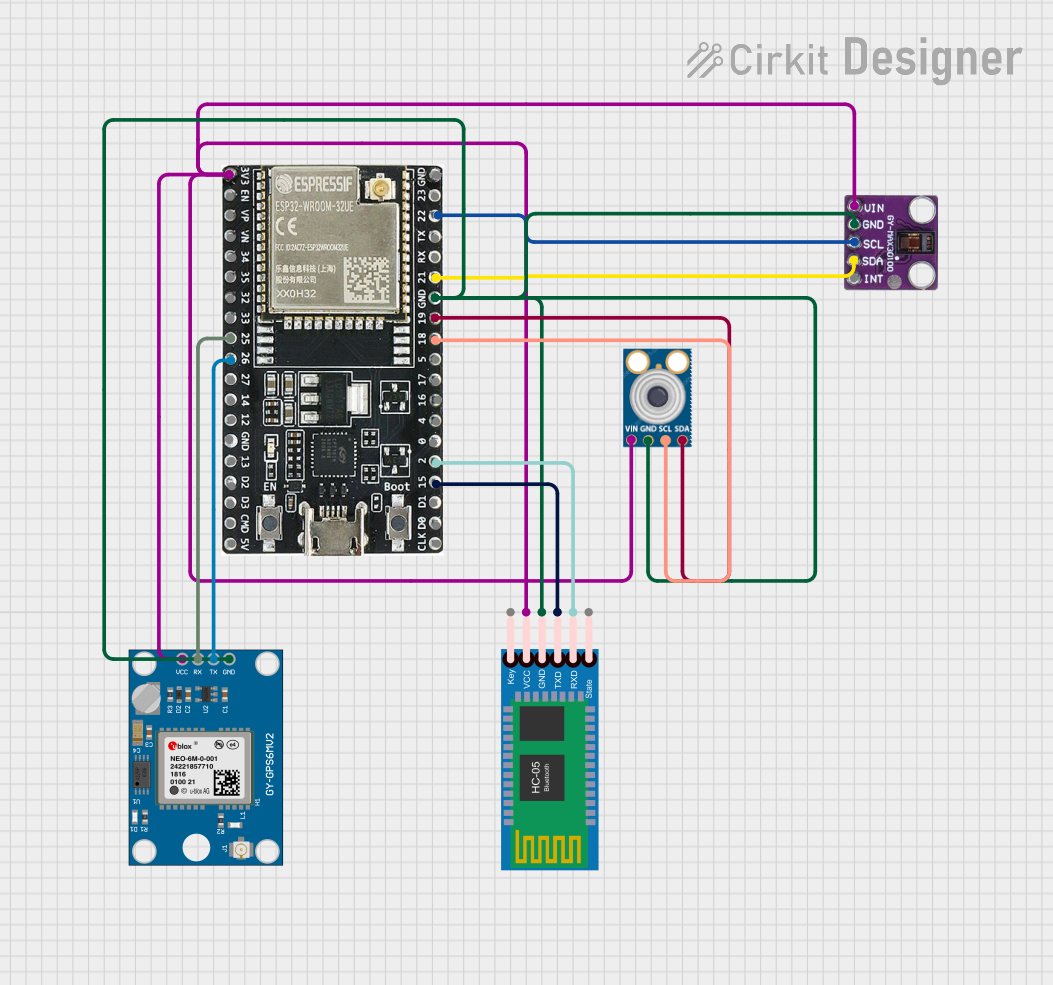
 Open Project in Cirkit Designer
Open Project in Cirkit Designer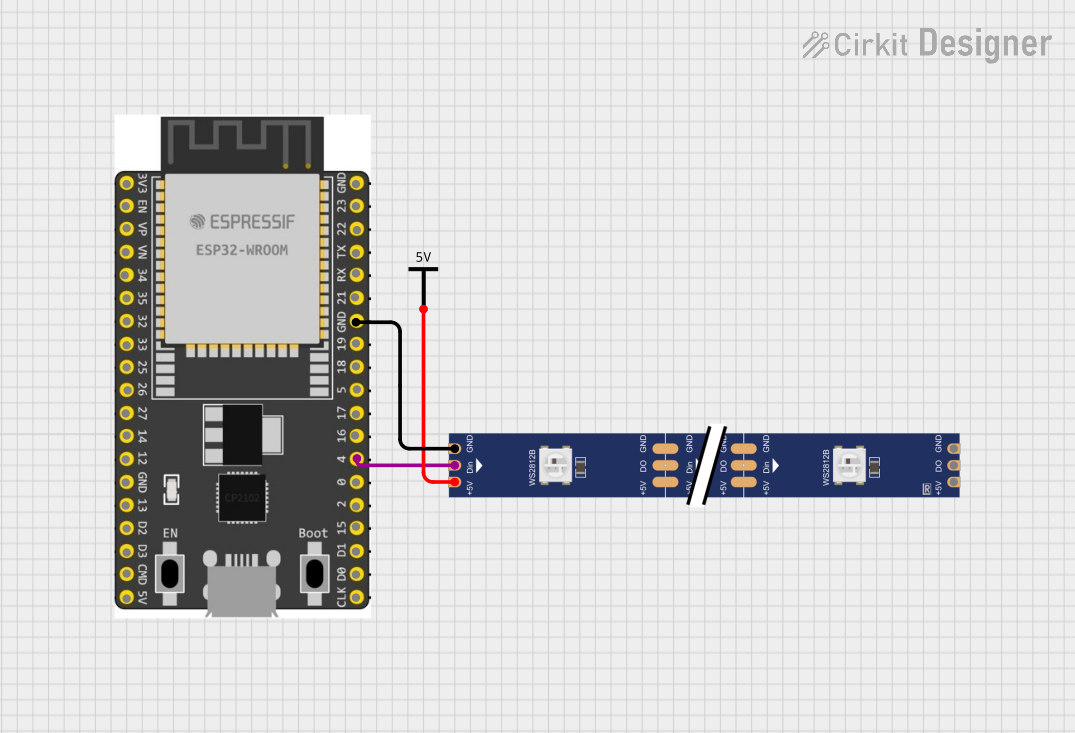
 Open Project in Cirkit Designer
Open Project in Cirkit Designer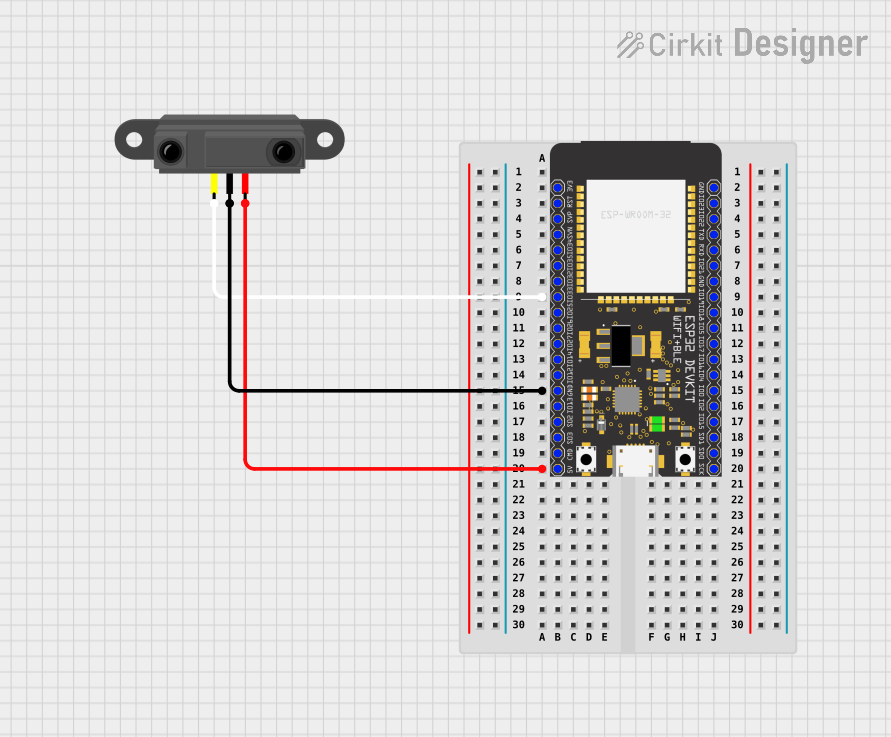
 Open Project in Cirkit Designer
Open Project in Cirkit Designer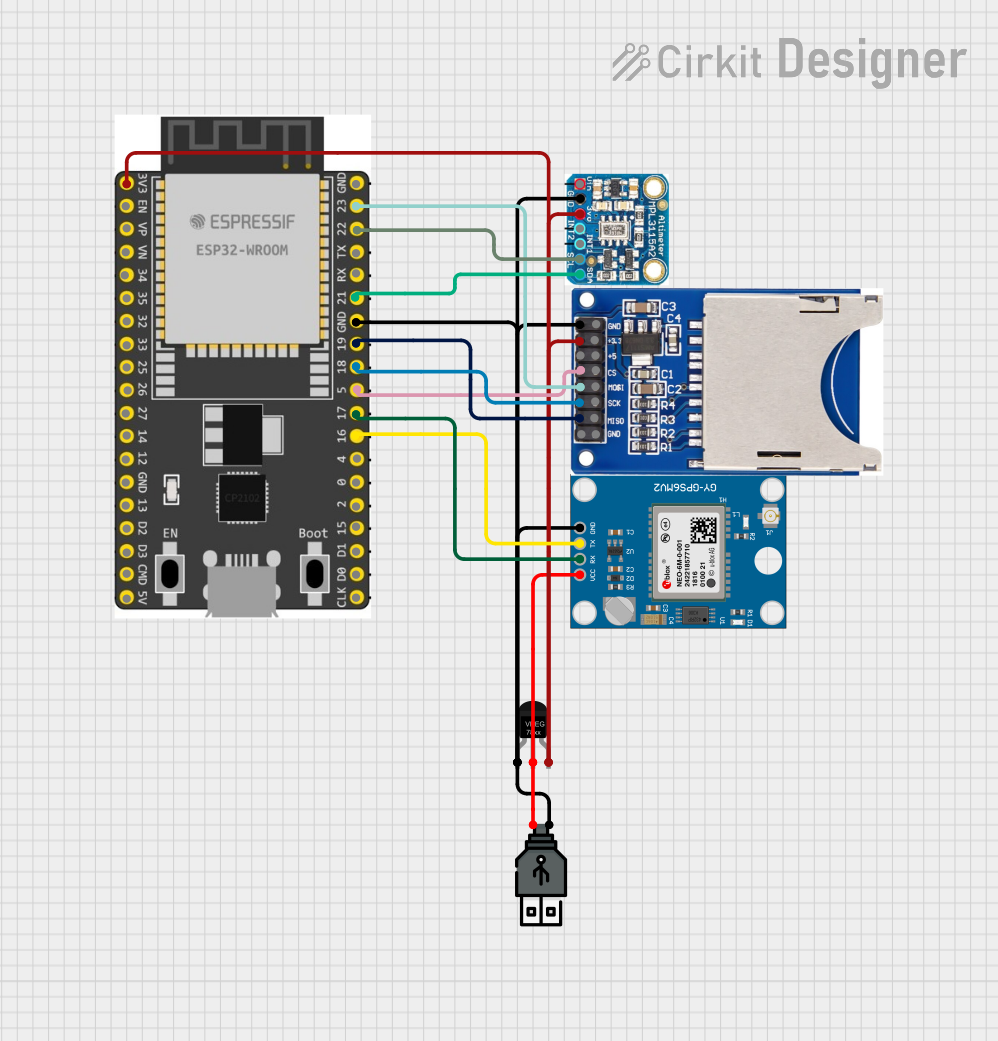
 Open Project in Cirkit Designer
Open Project in Cirkit DesignerExplore Projects Built with ESP32-WROVER-IE (38pin)

 Open Project in Cirkit Designer
Open Project in Cirkit Designer
 Open Project in Cirkit Designer
Open Project in Cirkit Designer
 Open Project in Cirkit Designer
Open Project in Cirkit Designer
 Open Project in Cirkit Designer
Open Project in Cirkit DesignerCommon Applications and Use Cases
- Smart home devices (e.g., smart lights, thermostats)
- Industrial IoT systems (e.g., remote monitoring, predictive maintenance)
- Wearable technology
- Wireless sensor networks
- Robotics and automation
- Prototyping and development of IoT projects
Technical Specifications
The ESP32-WROVER-IE (38pin) module is packed with advanced features and specifications:
Key Technical Details
- Processor: Dual-core Xtensa® 32-bit LX6 CPU, up to 240 MHz
- Wireless Connectivity:
- Wi-Fi: 802.11 b/g/n
- Bluetooth: v4.2 BR/EDR and BLE
- Memory:
- 4 MB PSRAM
- 4 MB Flash
- Operating Voltage: 3.3V
- GPIO Pins: 34 (configurable for various functions)
- Interfaces:
- SPI, I2C, I2S, UART, PWM, ADC, DAC
- Operating Temperature: -40°C to +85°C
- Dimensions: 18 mm x 31.4 mm
Pin Configuration and Descriptions
The ESP32-WROVER-IE (38pin) module has 38 pins, each with specific functions. Below is the pinout description:
| Pin Number | Pin Name | Function |
|---|---|---|
| 1 | GND | Ground |
| 2 | 3V3 | 3.3V Power Supply |
| 3 | EN | Enable (Active High) |
| 4 | IO36 | ADC1_CH0, VP (Analog Input) |
| 5 | IO39 | ADC1_CH3, VN (Analog Input) |
| 6 | IO34 | ADC1_CH6 (Analog Input) |
| 7 | IO35 | ADC1_CH7 (Analog Input) |
| 8 | IO32 | ADC1_CH4, Touch9 |
| 9 | IO33 | ADC1_CH5, Touch8 |
| 10 | IO25 | DAC1, ADC2_CH8 |
| 11 | IO26 | DAC2, ADC2_CH9 |
| 12 | IO27 | ADC2_CH7, Touch7 |
| 13 | IO14 | ADC2_CH6, Touch6, HSPI_CLK |
| 14 | IO12 | ADC2_CH5, Touch5, HSPI_MISO |
| 15 | IO13 | ADC2_CH4, Touch4, HSPI_MOSI |
| 16 | IO15 | ADC2_CH3, Touch3, HSPI_CS |
| 17 | IO2 | ADC2_CH2, Touch2 |
| 18 | IO0 | ADC2_CH1, Touch1 |
| 19 | IO4 | ADC2_CH0, Touch0 |
| 20 | IO16 | UART2_RX |
| 21 | IO17 | UART2_TX |
| 22 | IO5 | GPIO5 |
| 23 | IO18 | VSPI_CLK |
| 24 | IO19 | VSPI_MISO |
| 25 | IO21 | I2C SDA |
| 26 | IO22 | I2C SCL |
| 27 | IO23 | VSPI_MOSI |
| 28 | IO36 | ADC1_CH0 |
| 29 | IO39 | ADC1_CH3 |
| 30 | IO34 | ADC1_CH6 |
| 31 | IO35 | ADC1_CH7 |
| 32 | IO32 | ADC1_CH4 |
| 33 | IO33 | ADC1_CH5 |
| 34 | IO25 | DAC1 |
| 35 | IO26 | DAC2 |
| 36 | IO27 | GPIO27 |
| 37 | IO14 | GPIO14 |
| 38 | IO12 | GPIO12 |
Usage Instructions
How to Use the ESP32-WROVER-IE in a Circuit
- Power Supply: Connect the 3.3V pin to a stable 3.3V power source and GND to ground.
- Programming: Use a USB-to-serial adapter to connect the module to your computer. Ensure the EN pin is pulled high to enable the module.
- GPIO Configuration: Configure the GPIO pins as needed for your application (e.g., input, output, ADC, PWM).
- Peripherals: Connect external devices (e.g., sensors, actuators) to the appropriate pins based on their communication protocol (SPI, I2C, UART, etc.).
Important Considerations and Best Practices
- Voltage Levels: Ensure all connected devices operate at 3.3V logic levels to avoid damaging the module.
- Antenna Placement: Keep the onboard antenna area clear of metal objects to ensure optimal wireless performance.
- Power Supply Stability: Use a decoupling capacitor (e.g., 10 µF) near the power pins to stabilize the power supply.
- Boot Mode: To enter bootloader mode for programming, hold the IO0 pin low while resetting the module.
Example Code for Arduino UNO
The ESP32-WROVER-IE can be programmed using the Arduino IDE. Below is an example of a basic Wi-Fi connection:
#include <WiFi.h> // Include the Wi-Fi library
const char* ssid = "Your_SSID"; // Replace with your Wi-Fi SSID
const char* password = "Your_Password"; // Replace with your Wi-Fi password
void setup() {
Serial.begin(115200); // Initialize serial communication
WiFi.begin(ssid, password); // Start Wi-Fi connection
Serial.print("Connecting to Wi-Fi");
while (WiFi.status() != WL_CONNECTED) {
delay(500);
Serial.print("."); // Print dots while connecting
}
Serial.println("\nConnected to Wi-Fi!");
Serial.print("IP Address: ");
Serial.println(WiFi.localIP()); // Print the assigned IP address
}
void loop() {
// Add your main code here
}
Troubleshooting and FAQs
Common Issues and Solutions
- Wi-Fi Connection Fails:
- Solution: Double-check the SSID and password. Ensure the router is powered on and within range.
- Module Not Detected by Computer:
- Solution: Verify the USB-to-serial adapter is properly connected. Install the correct USB driver for your adapter.
- GPIO Pins Not Responding:
- Solution: Ensure the pins are correctly configured in your code. Check for short circuits or incorrect wiring.
- Overheating:
- Solution: Verify the power supply voltage is 3.3V. Avoid overloading the module with excessive current.
FAQs
Q: Can the ESP32-WROVER-IE operate on 5V?
A: No, the module operates at 3.3V. Use a voltage regulator if your power source is 5V.Q: How do I reset the module?
A: Pull the EN pin low momentarily or press the reset button (if available).Q: Can I use the ESP32-WROVER-IE with Arduino libraries?
A: Yes, the module is compatible with the Arduino IDE and supports many libraries.Q: What is the maximum range of the Wi-Fi?
A: The range depends on environmental factors but typically reaches up to 100 meters in open space.
This documentation provides a comprehensive guide to using the ESP32-WROVER-IE (38pin) module effectively.